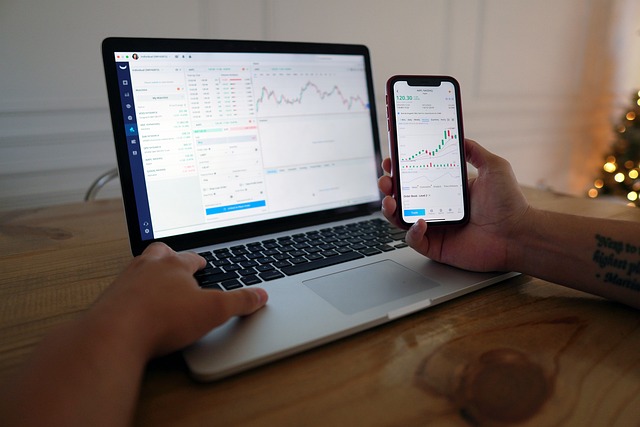The Rise of Automatic Trading Software in 2024: A New Era for Investors
Author: Jameson Richman Expert
Published On: 2024-11-04
Prepared by Jameson Richman and our team of experts with over a decade of experience in cryptocurrency and digital asset analysis. Learn more about us.
As technology continues to advance, investors are increasingly turning to automatic trading software to streamline and optimize their trading strategies. In 2024, the landscape of automatic trading has evolved dramatically, offering a wide array of options for both novice and experienced traders alike. This article delves into the intricacies of automatic trading software, its benefits, potential risks, and the future of this technology in an ever-changing market.

What is Automatic Trading Software?
Automatic trading software, commonly referred to as algorithmic trading or automated trading systems (ATS), utilizes pre-defined algorithms and mathematical models to execute trades on behalf of investors. This technology is designed to take the emotion out of trading, allowing for faster and often more informed decisions. With the capacity to analyze vast quantities of data in real-time, automatic trading software can identify patterns and execute trades at lightning speed, which is impossible for human traders.
How Does Automatic Trading Work?
Automatic trading systems operate by following specific rules and pre-programmed strategies. Here's a breakdown of how this sophisticated technology works:
- Market Analysis: The software continually scans the market for trading opportunities based on predefined criteria.
- Signal Generation: Once a potential opportunity is identified, the software generates a trading signal to buy or sell an asset.
- Execution: The trade is executed automatically without the need for human intervention, reducing the chances of emotional decision-making.
- Risk Management: Automatic trading systems often incorporate risk management features, enabling traders to set limits and stop-loss orders to minimize potential losses.
Types of Automatic Trading Software
There are various types of automatic trading software available, each offering unique features and capabilities. Some of the most prevalent types include:
- Trading Bots: These are programmable systems that execute trades based on specific criteria defined by the user.
- Expert Advisors (EAs): Primarily used with MetaTrader platforms, EAs are scripts that provide trading advice or execute trades automatically.
- Proprietary Software: Developed by financial institutions or trading firms, this software often includes advanced features and analytics tailored to the firm’s strategy.
- Social Trading Platforms: These platforms allow traders to follow and automatically replicate the trades of seasoned investors.
The Benefits of Using Automatic Trading Software
The adoption of automatic trading software brings a multitude of advantages that can significantly enhance trading performance. Here, we explore some key benefits:
1. Efficiency and Speed
One of the primary advantages of automatic trading software is its ability to execute trades at high speeds. In fast-moving markets, timely execution can be the difference between profit and loss. Your trading software can analyze market fluctuations and execute trades within milliseconds, something that even the most experienced human trader cannot achieve.
2. Emotional Detachment
Trading can be an emotional roller coaster, with fear and greed often clouding judgment. Automatic trading software eliminates these emotions, allowing for more rational trading decisions based purely on data analysis. This objectivity is crucial to maintaining a disciplined trading strategy.
3. Consistent Performance
Automatic trading systems operate according to strict algorithms, which means they can maintain a consistent trading strategy over time. This consistency is vital for long-term success, as it minimizes the likelihood of impulsive trading decisions driven by short-term market fluctuations.
4. Backtesting Capabilities
Many automatic trading platforms come equipped with backtesting tools, allowing traders to test their strategies against historical data to determine potential effectiveness. This feature helps refine trading strategies before deploying them in live markets, thereby reducing risk.
Potential Risks of Automatic Trading Software
While automatic trading software offers numerous benefits, it is not without its risks. Traders should be aware of these potential pitfalls:
1. System Failures
Technical malfunctions, including software bugs and connectivity issues, can lead to significant losses. Traders must ensure they use reliable systems and have contingency plans in place in case of a software failure.
2. Over-Optimization
Traders may fall into the trap of over-optimizing their models based on historical data—also known as curve fitting. This can result in a system that performs well in backtests but fails to deliver in real-world trading conditions.
3. Market Changes
Financial markets are affected by numerous unpredictable factors, including geopolitical events and economic changes. A trading system developed under specific market conditions may not perform well if those conditions change dramatically.
4. Dependence on Technology
Relying too heavily on automated systems can lead to a lack of understanding and knowledge about market dynamics. Traders should maintain a balance between automated systems and personal market analysis.

The Future of Automatic Trading Software in 2024
As we progress deeper into 2024, the landscape of automatic trading software continues to evolve. Emerging technologies such as artificial intelligence (AI) and machine learning are transforming the capabilities of trading algorithms, making them more adaptable and efficient.
1. Artificial Intelligence Integration
AI-driven trading systems can learn from market behavior and adjust their strategies in real-time, making them more robust against changing market conditions. This evolution is likely to lead to greater accuracy and profitability for traders who adopt such technologies.
2. Enhanced Risk Management Features
Future automatic trading software will likely implement more sophisticated risk management tools. These features can analyze market conditions in real-time, enabling traders to set dynamic risk parameters that adjust as market volatility changes.
3. Greater Accessibility
In 2024, automatic trading software is becoming increasingly accessible to the average investor. With the proliferation of user-friendly platforms and affordable solutions, more individuals can leverage automated trading in their investment strategies.
4. Regulatory Changes
As the world of automatic trading grows, so too does the need for regulatory oversight. Traders should expect clearer regulations to emerge regarding the use of automatic trading systems to protect investors and ensure market integrity.
Conclusion: Embracing the Future of Trading
The automatic trading software of 2024 represents a significant advancement in the trading industry, providing powerful tools for investors to enhance their trading strategies. While there are undeniable benefits, including efficiency, speed, and emotional detachment, traders must also remain vigilant about the potential risks associated with reliance on automated systems.
In my opinion, the future of trading will undoubtedly incorporate more automation, but the best results will come from a balanced approach that combines human intuition and analytical skills with the efficiency of automatic trading software. By embracing both the technological advancements and the fundamental principles of trading, investors can better navigate the complexities of the financial markets.
As this technology continues to evolve, staying informed, maintaining a sound understanding of market dynamics, and regularly reassessing one’s trading strategies will be paramount for success in the ever-changing world of automatic trading.